Testimony of the Day
“Hi Maria, I have read ALL the diet books, I’ve done LOTS of different diets, LOTS. I understood each diet’s CONCEPTS, but never understood science UNTIL I met Maria Emmerich! I was eating arugula, spinach, strawberries, blueberries, Ezekial bread, nuts and seeds, and on and on, you name it, if we were supposed to eat it, I ate it, including grass-fed grass-finished beef and I still couldn’t keep the weight off! I could lose weight but I have never been able to maintain it. AND, I would never lose everything I needed to lose.
Now I understand some of the science thanks to Maria, and what IS affecting my chemistry, and I will continue to be a STUDENT with her daily BLOG’S, etc.! Before I had a consultation and worked with Maria for 6 weeks, I had been introduced to Maria’s BLOG by an acquaintance almost a year prior. I read, read, read her BLOGS, etc. and also bought ALL of her books except the children’s one at that time. That was a year ago. I started to incorporate her recommendations into my life, food-wise, and even some of the supplements she recommends, and I actually still wasn’t loosing. I mentioned this to the acquaintance who introduced me to Maria’s BLOG and she theorized that maybe there is something, supplement wise, that Maria could zero in on that would help me lose and maintain, or that maybe I am still doing something wrong, meaning eating something wrong.
WELL, after working with Maria for 6 weeks I think she has zeroed in on the culprit, dairy!!!! Also, I was, occasionally, eating the Trader Joe’s sprouted grain bread, so between that and the occasional dairy, we are on to something VERY important for me. I am only getting detailed and personal to help you understand that Maria KNOWS HER STUFF! Maria is exactly what I have been looking for, someone who could/would/and did tailor her services to ME, and for ME! Getting back to ALL the books I have read and diets I have done, I have never read one or talked to anyone who can and does explain the science as Maria does, plus I understand it at the same time!!
I am just mad that I didn’t hear about Maria sooner because it could have saved me a lot of money and time AND wear and tear on my body!!! Do what she says as she knows what she is talking about!!! I am just at the early/beginning stage of my journey with Maria, I am running up and down the stairs in my home where before I had to hold on because of the pain, my CRAVINGS are GONE but the fact that I can have something sweet and delicious, “healthified”, while losing weight is a Godsend to me!! The best part is that I don’t even crave anything anymore!! I AM A STUDENT FOR LIFE and will also try to be a TEACHER of Maria’s way and live by example to all my precious children and grandchildren!!! Thank you Maria for ALL that you do and DID for me!! Mary Ellen
To get started as Mary did, click HERE.
I get a lot of questions on eggs and how many are safe per day. Or what oil can I use in place of butter and coconut oil because they are too high in saturated fat? Well, I write a lot about the Cholesterol Myths in my book Secrets to a Healthy Metabolism. Here is a small snippet from my book:
Nutrients in Butter
The powerful food advertisers have been very effective claiming that butter is hazardous, when in fact it is a valued part of many established diets and includes important nutrients. Here is a list of some:
Fat-Soluble Vitamins: These include vitamins A, D, K, and E along with their naturally occurring cofactors needed to gain the greatest effect. Butter is the best source of these important nutrients. Go figure, butter has the best source of vitamin A, most readily absorbed and utilized, than from any other source. Fortunately, these fat-soluble vitamins are quite stable and survive the pasteurization process.
An important researcher named, Dr. Weston Price, studied remote traditional people around the world. He found that butter was a staple in many native diets and he did not find any who consumed polyunsaturated oils. One important piece to note it that the butter was deep yellow and made from grass-fed cows, not corn-fed beef, like the butter from our main supermarkets. When Dr. Price studied the grass-fed butter he found that it was very high in all fat-soluble vitamins, particularly vitamin A. According to Dr. Price, without them, we are not able to use the other minerals we eat, no matter how plentiful they may be in our diets. He also believed the fat-soluble vitamins are necessary for the absorption of water-soluble vitamins. Vitamins A and D are essential for growth, for healthy bones, for proper development of the brain and nervous systems. It is also important for reproduction; it brings out male and female sexual characteristics. These essential nutrients are especially beneficial for children and expectant mothers. As the use of butter in America has declined, sterility rates and problems with sexual development have increased. When animals consume butter substitutes, their growth is stunted and they are unable to sustain reproduction.
Not all the societies Dr. Price studied ate butter; but they went to great lengths to obtain foods high in fat-soluble vitamins; such as fish, shellfish, organ meats, blubber of sea animals, and insects. These isolated societies recognized the importance of these items in the diet and liberally ate the animal products containing them. Dr. Price found that their diet provided about ten times more fat-soluble vitamins than the American diet of the 1930s. This ratio is more extreme today since Americans have considerably reduced animal fat consumption.
Conjugated Linoleic Acid: Butter from pasture-fed cows also contains a form of linoleic acid called CLA; it helps build muscle and prevents weight gain. CLA also has strong cancer-fighting properties. CLA disappears when cows are fed dry hay or processed feed, so spending a few extra dollars on grass-fed butter is worth it. It also tastes way better!
Lecithin: Lecithin is a large element of butter that helps in the absorption and digestion of cholesterol. This nutrient is also abundant in organic egg yolks.
Glycosphingolipids: This fat may be new to most of you. It is very helpful in preventing gastrointestinal infections, particularly in children and the elderly. For this reason, young children who drink skimmed milk have diarrhea at rates up to five times greater than children who drink whole milk.
Trace Minerals: Manganese, zinc, chromium, and iodine are all helpful components of butter. In areas that didn’t receive foods from the sea, iodine in butter protected against goiter. Butter is very rich in selenium, a trace mineral with antioxidant properties, having more per gram than herring or wheat germ.
CONQUERING HIGH CHOLESTEROL
Here are ways to right-size your cholesterol, reduce your heart-disease risk factors, and get a whole lot healthier in the process:
1. Eat less sugar and flour. Starch and sugars not only spark inflammation, they elevate triglycerides, a potentially dangerous form of cholesterol. Too many triglycerides in the blood impede the circulation of healthy cholesterol, causing the entire system to break down. When choosing grain products look for those made with whole and sprouted grains. Avoid cereals, cookies, cakes, and other sweets, and minimize your intake of pasta and bread.
2. Eat more non-starchy vegetables. The antioxidants and phytonutrients in vegetables help protect cholesterol in the blood from free-radical damage. They are also high in fiber, which assists the body in ridding itself of cholesterol-laden bile. A Harvard Nurses’ Health Study showed that participants who ate five or more servings of vegetables a day had a 25 percent lower risk of heart attack and stroke than those who ate the fewest servings.
3. Eat quality fats and cut out trans-fats. That means cutting trans-fats entirely, and avoiding high-fat processed and fried foods in favor of healthy, nutrient-dense whole foods. Enjoy nuts, seeds, fish, avocados, and olive oil, and don’t feel you need to cut out saturated fats entirely either. The body craves these and requires them for proper cell, nerve, and brain function. Plus, when people don’t satisfy their flavor and satisfaction desires for saturated fats, they’ll often consume processed carbohydrates instead, thereby increasing insulin, weight gain, and inflammation. When selecting meat and dairy choose minimally processed foods ideally from pastured, free-range, and grass-fed animals. These have more nutrients the body needs and fewer pro-inflammatory fats. Eating eggs are fine too, even the yolks! Research published in the American Journal of Clinical Nutrition shows that people eating up to seven eggs a week are no more likely to experience heart attacks or strokes than those who eat less than an egg a week.
4. Exercise. Moderate to intense exercise lowers cholesterol overall and raises the relative levels of protective HDL. Exercise also helps reduce excess inflammatory effects of stress and help reduce weight. A 2006 Duke study that examined the effects of exercise on inactive, overweight adults found that, after six months, many of the factors putting them at risk for heart disease had reversed.
5. Consider CoQ10: CoEnzymeQ10 is a powerful vitamin-like nutrient that helps increase the mitochondria in our cells. The mitochondrion is the part of the cell that burns fat and lowers triglycerides. Add 400mg at breakfast.
To sum up all the confusion about saturated fats and cholesterol, I want you to leave this chapter realizing that our choice of fats and oils is of extreme importance to our wellbeing. Infants and small children, benefit from more fat in the diet rather than less. Being aware of the types of fats we consume must be of utmost importance. Avoid all processed foods containing harmful hydrogenated fats and polyunsaturated oils; instead of buying pre-packaged cookies, make your own with real butter! They taste better anyway. Use oils like extra virgin olive oil and small amounts of unrefined flax seed oil. Start experimenting with coconut oil for your pie crusts and baked goods. Use animal fats for occasional frying. Don’t be afraid of egg yolks and other animal fats that will keep our bodies strong and beautiful. Lastly, use good organic butter, with the assurance that it is a wholesome, omega 3-filled safe food for you and your family.
The best way to treat heart disease is to enjoy a diet that provides animal foods that provide vitamins B6 and B12; bolster thyroid function by daily use of iodized sea salt; and to avoid vitamin and mineral deficiencies, specifically magnesium and vitamin E and C, that make the artery walls vulnerable to ruptures and the buildup of plaque. More importantly, we need to eliminate processed foods containing refined carbohydrates, oxidized cholesterol (skim milk), and free-radical-containing vegetable oils that cause inflammation in the body.
A chowder is traditionally thickened with flour, milk, and the starch from the potatoes. In my recipe, I used the cauliflower puree to thicken the soup. I also kept some whole cauliflower pieces to have chunks like a potato in traditional chowder.
“HEALTHIFIED” CHOWDER
4 slices bacon, diced
1 cup chopped onion
1 cup chopped celery
4 cups chicken broth
4 cups cauliflower, in 1-inch pieces
1 1/2 tsp Celtic sea salt
Fresh ground black pepper to taste
3 TBS butter
2 (10-ounce) cans minced clams and/or 2 cups prepared lobster (shrimp/fish work too)
Place diced bacon in a large stockpot over medium-high heat. Cook until almost crisp; add onions and celery, and stir fry for about 5 minutes. Stir in broth and cauliflower, and season with salt and pepper. Bring to a boil, and cook uncovered for 15 minutes, or until cauliflower is fork-tender. Remove 3/4 of the cauliflower and place it into a food processor. Process cauliflower until very smooth. Return to the pot. Add in butter. Drain clams, reserving clam liquid; stir clams and 1/2 of the clam liquid into the soup (or use your favorite seafood). Cook for about 5 minutes, or until heated through. Makes 8 servings.
NUTRITIONAL COMPARISON (per serving)
Traditional Chowder = 396 calories, 24 carbs, 2.2 fiber
“Healthified” Chowder = 127 calories, 3.4 carbs, 2.3 fiber

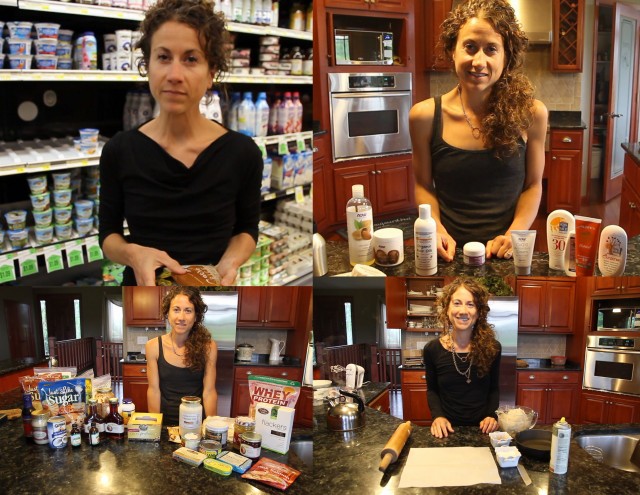
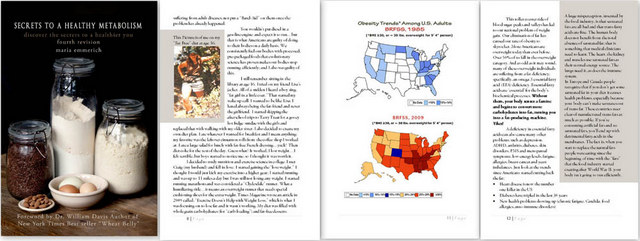



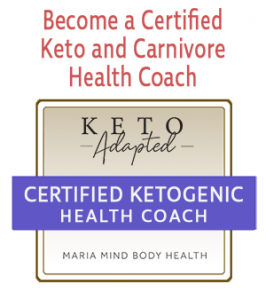

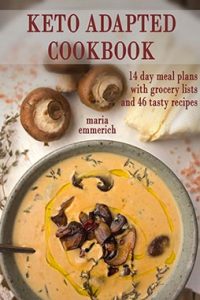
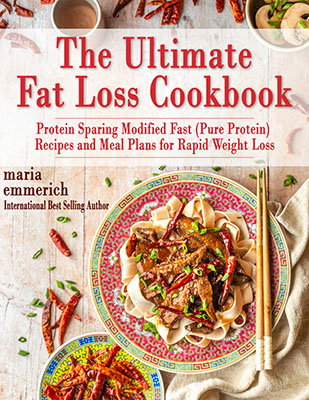
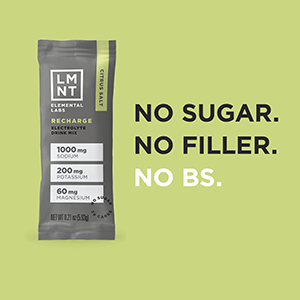
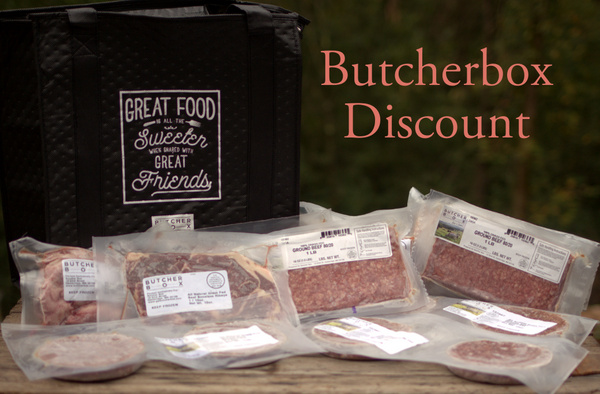

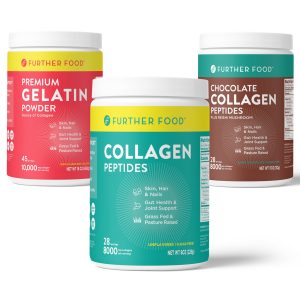
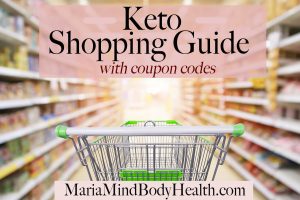
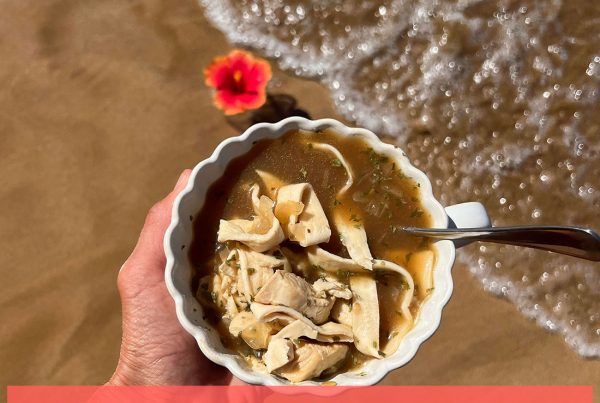
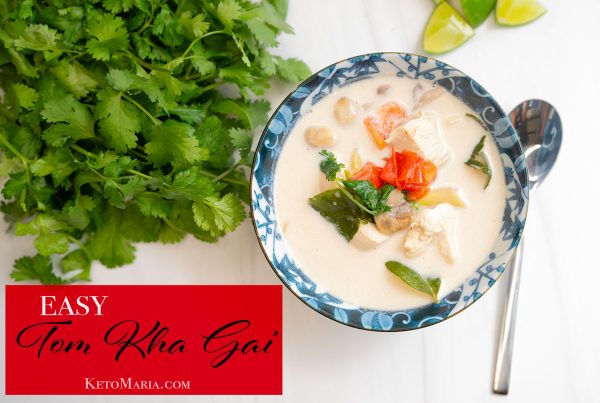

I went to make this and could not find this recipe that I had printed out, so I improvised from memory!
I used the chicken broth, green onion, various vegetables such as cauliflower, carrots, daikon radish, turnips with greens, kale, and kohlrabi (my garden has been very productive this year!). I first added the longer cooking veges such as carrots, cauliflower, turnips and daikon and then added the greens and wild bay scallops from Trader Joes. I had some seaweed – wakami – that I added for the nutrients as well. I also added 1/2 cup of plain yogurt to make it more creamy and a few spices such as sea salt, pepper, parsley & basil. It was WONDERFUL! Thank you so much for your ideas that you present in your recipes. It helps me to have a launching pad to be more creative in my cooking!
Mary
Ahhh! A garden! I can’t wait! It is 8 degrees F today!
Thank you so much for the kind words!
Ooh! Finally found some baby clams that were not in cottonseed oil!! I made this soup last night, and WOW! I was impressed and when DH had dinner (worked late) he had a huge bowl, then had more! He loved it! He still thinks it’s absolutely crazy that I’m getting healthier by not eating certain things and still being able to indulge in eating desserts (yours) and strawberries and cream, and bacon! But he can see the results with his own eyes. Anyway, great success this clam chowder, I think the butter makes it taste like it has corn in it too, which just made me so happy! And even better, there’s still some left for lunch on Monday!
Awesome! Thanks France! 🙂
Hey Maria..was looking for a recipe for a milk free seafood chowder and was very happy that you had one on your site. Oddly enough I have never made one, which my friends think is weird since seafood is VERY popular in Atlantic Canada. Anyway it was very tasty. Mine was a little too salty, but the Celtic sea salt I used was super fine, so it could have been that or it could have been the bacon and the way it was cured. Anyway, I will definitely be making this again. A friend tasted it as well and thought it was delicious. They were shocked it was not made with milk and was healthy. Kudos! 🙂
Thanks!
Hi Maria!
I have found that diary makes me gain weight, so I typically replace butter with coconut oil, however, sometimes I just want the good ol’ taste of butter and not a cocunutty flavor.
I just read that for some people who are dairy sensitive, ghee is a good option? How do you feel about that statement? And does Ghee taste similar to butter?
THANKS!!!!!
You can try Ghee. If you are really sensitive to dairy it might be ok. 😉